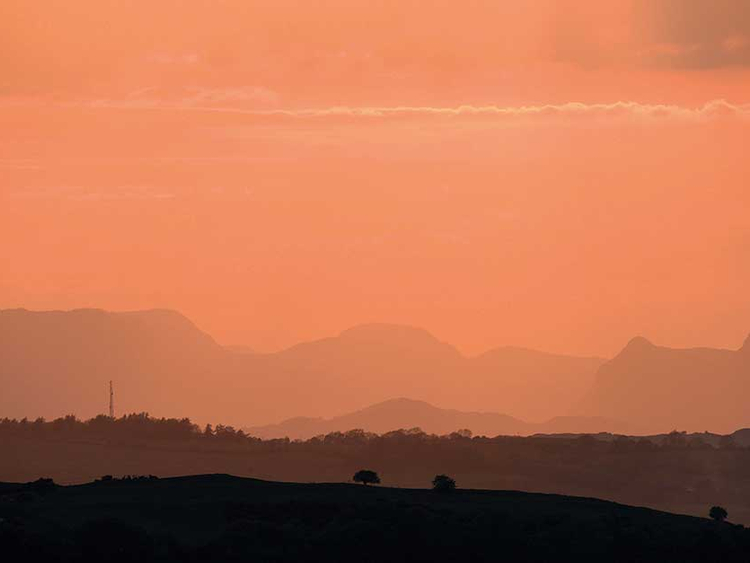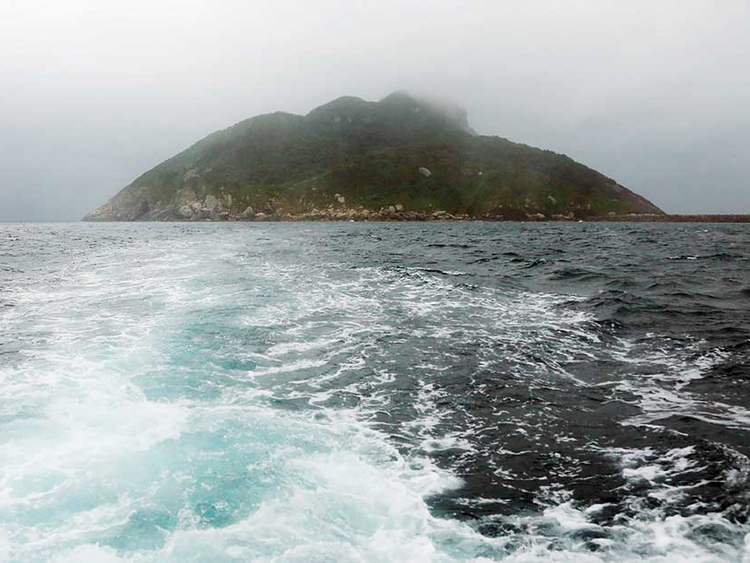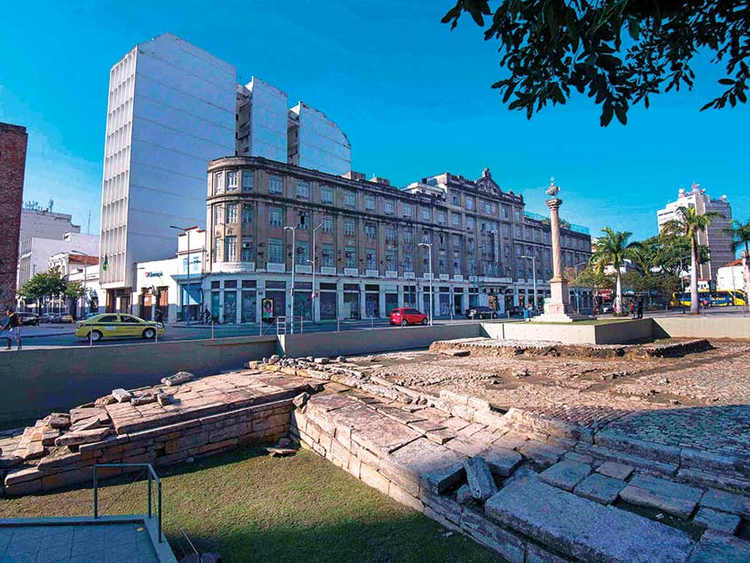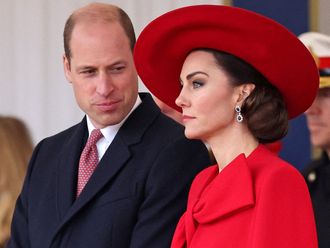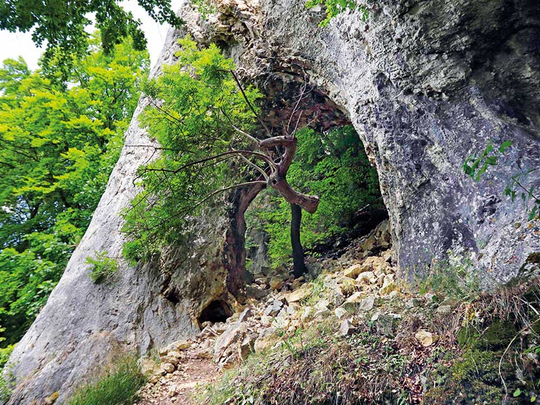
Warsaw (Poland): Ancient caves in West Germany with art dating back to the Ice Age and disused silver ore mines in southern Poland were among the sites that a United Nations cultural agency has added to its list of heritage treasures during its current session.
The Unesco World Heritage List Committee added the mines and caves, and nine other sites, to the roster of places called out for special recognition on Sunday. During its 11-day session in Poland that started July 2, the committee so far has added 22 sites to the list.
The designation, which recognises the outstanding universal values of the sites, is meant to draw attention to them and the need to preserve them.
Britain’s Lake District, an area of wild beauty that beguiled poets and artists from William Wordsworth to Beatrix Potter, was named Sunday as a World Heritage site by Unesco.
The UN’s cultural body meeting this weekend in Krakow praised the region’s “picturesque aesthetic” as well as its links with Romantic art and literature.
“The special significance of the Lake District lies in the interaction between social, economic, cultural and environmental influences,” it said in a statement.
Considered the cradle of the British Romanticism movement pioneered by the likes of Wordsworth, Samuel Taylor Coleridge and Robert Southey, the region becomes Britain’s 31st World Heritage site.
Unesco’s heritage committee considered 33 sites for the prestigious status at its annual gathering in Poland this weekend.
On Sunday it also accepted Taputapuatea, a portion of the “Polynesian Triangle” in the South Pacific thought to be the last part of the globe settled by humans, to the list.
The Valongo wharf in Rio de Janeiro where slaves from Africa first arrived in Brazil has been added to the list of World Heritage sites, Unesco announced on Sunday.
The committee of the UN cultural body, meeting in Krakow, Poland, said Valongo was a reminder of the estimated 900,000 Africans who were brought there by slave traders starting in 1811.
The old stone wharf “is the most important physical trace of the arrival of African slaves on the American continent,” Unesco said on its website.
For Valongo, the world heritage honour makes it a twin with Ile de Goree, a small island near Dakar harbour that was chosen in 1978 as the emblem of the departure points for slaves from West Africa on their way to the Americas.
Valongo deserved the recognition like Auschwitz and Hiroshima “to make us remember those parts of the history of humanity that must not be forgotten,” historian Katia Bogea, head of Brazil’s national heritage institute (IPHAN) told the Unesco committee.
Today the Valongo site is not on the water, but well inland, following expansion of the original city. The remains were only discovered by accident in 2011 during massive works to refurbish the port area for the 2016 Olympics.
Historians had known that this was the area where the biggest slave trade in the Americas was centred, but few Brazilians were aware. Nearby, a couple discovered by chance that their house was sitting on a mass grave of what could be tens of thousands of slaves.
Valongo is where the slaves, often emaciated and sick after the voyage, were taken to be quarantined, sorted and sold.
“It’s a unique memorial, containing the last remaining vestiges of the slaves’ arrival,” anthropologist Milton Guran recently told AFP.
Guran also pointed to a far reaching consequence to Unesco status: “It will oblige Brazil to recognise its African roots” and will also encourage educational tourism.
A men-only island in Japan where women are banned and male visitors must bathe naked in the sea before visiting its shrine, has been declared a Unesco World Heritage site.
The tiny land mass of Okinoshima is permanently manned by a Shinto priest who prays to the island’s goddess, in a tradition that has been kept up for centuries.
Limited numbers are permitted to land on the island in the Sea of Japan (East Sea) — this year it was 200 — for a yearly festival that lasts just two hours, but they must adhere to strict rules.
Most importantly, they must be men, but they must also strip off and take a purifying dip in the ocean before they are allowed to set foot on the sacred ground of the shrine.
Despite its inscription on Unesco’s World Heritage list — often the prelude to a leap in tourist numbers — shrine officials say they are now considering banning future travel for anyone apart from priests, partly out of fears the island could be “destroyed” by too many visitors.
“The island has sometimes been said to ban women, but in principle anyone but the priests who pray there for 365 days a year is barred from entering,” said a spokesman.
The ban on female visitors specifically “has nothing to do with discrimination against women,” the official told AFP by phone.
It is considered dangerous for women to travel by sea to get to the island and the shrine will not change the centuries-old rule, he said.
“It is meant to protect women, the birth-giving gender,” he added.
The island, which sits off the northwest coast of Kyushu, the southernmost of Japan’s four main islands, was an important window for foreign trade in Japan since ancient times, forming part of a trade route that linked the archipelago to the Korean peninsula and China.
Thousands of gold rings and other valuable items have been found there.
“These treasures are believed to have been offered to the gods in order to pray for national prosperity and the safety of marine traffic,” says the website of Munakata Taisha, the shrine which owns Okinoshima.
Unesco’s heritage committee considered 33 sites for the prestigious status at its annual gathering in Poland.
On Sunday it also accepted Taputapuatea, a portion of the “Polynesian Triangle” in the South Pacific thought to be the last part of the globe settled by humans, to the list.
It also added Britain’s Lake District — muse for artists from William Wordsworth to Beatrix Potter — and the Valongo wharf in Rio de Janeiro where slaves from Africa first arrived in Brazil.
Unesco’s World Heritage list includes over 1,000 sites, monuments and natural phenomena that are of “outstanding universal value” to humankind.
It includes treasures such as Australia’s Great Barrier Reef, the Taj Mahal in India, and the rock-carved city of Petra in modern-day Jordan.
Among the other new sites on the list are the modernist architecture in Asmara, the capital city of Eritrea” the historic city of Yazd, in Iran” Japan’s sacred and restricted-access island of Okinoshima, and Los Alerces National Park in Argentina.
The caves are in the western German state of Baden-Wuerttemberg, where archeologists have discovered ancient instruments and carvings made from mammoth ivory, including a 40,000-year-old figure known as the Venus of Hohle Fels. Historians say it is the oldest known image of a human.
The old mines in Tarnowskie Gory are an underground tourist site, visited partly by boat, and are the only industrial site that was added to the list this year.
Also added Sunday were Turkey’s 3rd century B.C. Aphrodisias temple” England’s Lake District and the Valongo Wharf Archaeological Site in Rio de Janeiro, Brazil.
Heated controversies surrounded the addition to the World Heritage List of west China’s Qinghai Hoh Xil mountain area, on the Tibetan Plateau, and of Hebron, which was described in the submission as a Palestinian site, drawing vehement protests from Israel.


